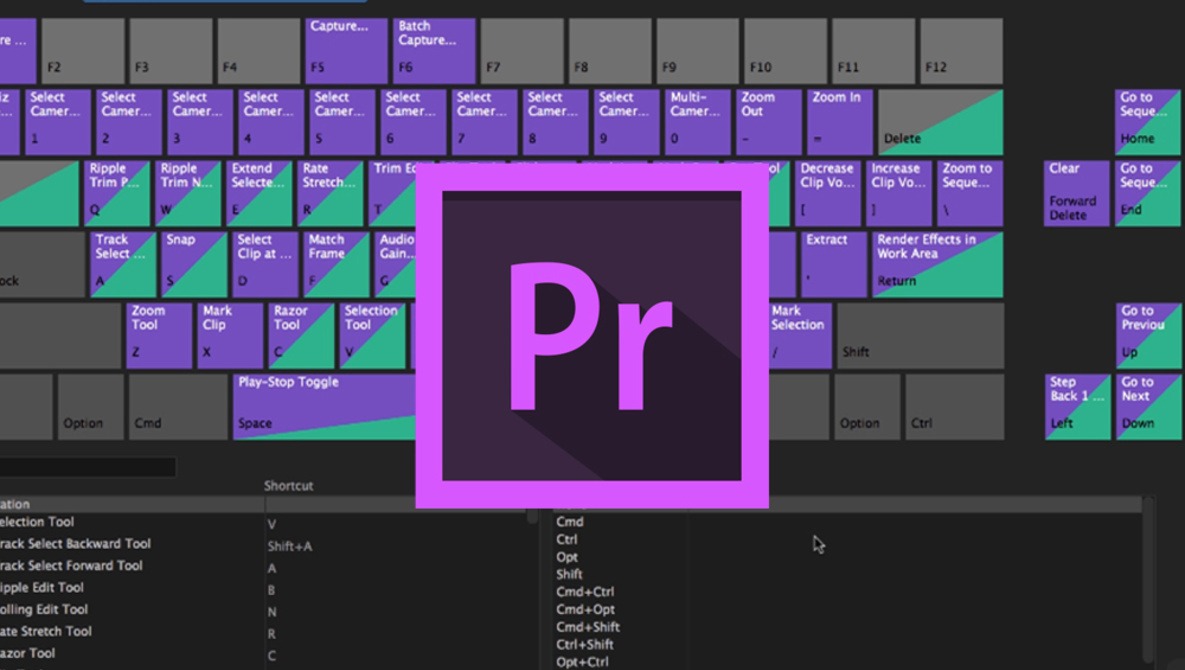
- #Adobe premiere pro split clip keyboard shortcut how to#
- #Adobe premiere pro split clip keyboard shortcut software#
Like anything, these are just ways of saving time.

You can also select multiple clips in your timeline to adjust if you’re trying to cut down numerous tracks to a certain point. If you want to trim or expand the end of a clip, hover your cursor over the end of the clip and drag it once you see the red block arrow appear. Whether you’re a Razor tool user or a ⌘+K fan, it goes without saying that the Ripple and Trim tools are beneficial for trimming or expanding the ends of clips. Now, let’s move on to the world of ripples! Chicago Deep Dish-it really just comes down to preference. The difference between the ⌘+K and Razor tool methods is an age-old debate between editors, and you’ll get a different opinion from every editor. The ⌘+K shortcut is effortless to use, and good for making a cut if your playhead is already at your desired cut location, but when making a huge batch of cuts, it comes up a little short compared to the Razor tool’s speed. To save you time, I’ve timestamped the video for this shortcut. We included this little trick in a tutorial that talks about things you might know about Premiere Pro. This is awesome if you have loads of tracks on your timeline and need an all-encompassing cut on the fly. You can also hold shift along with ⌘+K, which will cut all the tracks on the playhead, not just the selected ones. It’s one of the simplest, most effective cuts you can make since your playhead is usually on top of where you want to cut when you’re scrubbing through footage. The way Playhead Splitting works is that when you enter ⌘+K while clicked into your timeline, the command splits your selected clip right at the playhead marker. If you’re a keyboard shortcut junkie like myself, ⌘+K (or Ctrl+K if you’re editing with a PC), this may already be your cutting technique of choice.
#Adobe premiere pro split clip keyboard shortcut how to#
How to Split a Clip at the Playhead (⌘+K) It’s not a part of my editing workflow since I primarily use the ⌘+K method (we’ll get to that next), but everything is in its proper place. It also can be tricky to use on a spaced-out timeline, and may cut a few frames you didn’t intend to trim. And, switching from your cursor to the Razor tool can become tedious (even though it’s just pressing the C key. If you want it to magnetize to your playhead, you must select the magnetize option. The Razor tool, however, has its limitations. So, if you need to make a bunch of cuts in a row, the Razor is the tool for the job. The Razor tool is also a huge help when working with extensive timelines with multiple tracks because you can select the clip you want to cut by placing your razor over it. It’s also beneficial when making a montage jump cut because you can just cut down the line and delete the clip sections that you don’t need.

This is a straightforward tool to get the hang of for beginners because it’s so straightforward. It’s the first thing you learn to use when editing your first project since it’s the most direct cutting tool. We genuinely believe that these types of edits for these tools are an essential step in understanding how editing works and, more specifically, how to edit inside Premiere Pro.Įven if you know all the different ways to cut, knowing which tool works best for your particular edit is good.Īh, yes. There are other ways to cut, such as the slip and slide method, but for this article, we’re just going to look at some of the fundamental edit tools.


When you get to that point, what’s the best way to approach cutting? Then, after everything is organized, you may have to cut down even further and comb through additional video and audio tracks.
#Adobe premiere pro split clip keyboard shortcut software#
The primary function of editing software is to cut down clips and place them in a particular order to create a story. In this walkthrough, we’ll cover how to use the razor tool, the ctrl+K/⌘+K shortcut, and Ripple and Trim editing techniques in Premiere Pro.Ĭutting, obviously, is one of the most essential parts of an edit.


 0 kommentar(er)
0 kommentar(er)
